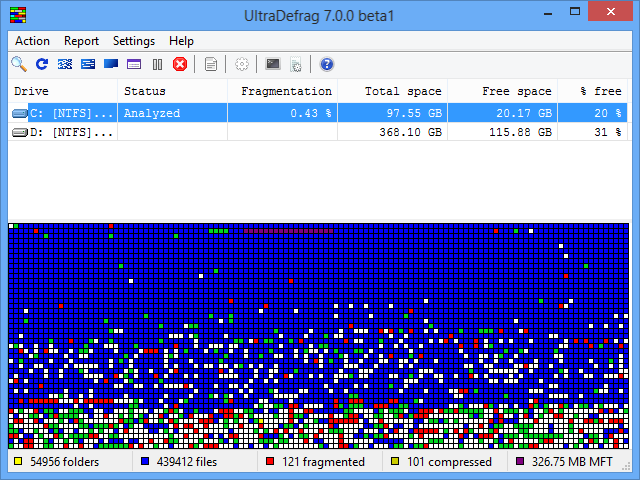Disk Defragmentation (defrag)
Updated: Tue, 24 Mar 2015 by Rad
Disk Defragmentation (defrag) is a process that reduces the amount of fragmentation. It does this by physically organizing the contents of the mass storage device used to store files into the smallest number of contiguous regions (fragments). This allows your hard drive to access files more quickly.
It can help improve your computer's performance by making the reading of files more efficient, thanks to the fact that all the tiny pieces that make up a single file are right next to each other.
What is fragmentation
Fragmentation makes your hard disk do extra work that can slow down your computer. Removable storage devices such as USB flash drives can also become fragmented.
Fragmentation occurs on a hard drive, a memory module, or other media when data is not written close enough physically on the drive. When the hard drive, for example, has to read pieces of data from multiple different areas on the drive, it can not access the whole of the data as fast as it could if it had all been written together in the same area of the drive.
Fragmentation analogy
As an analogy, imagine that you want to play a card game that requires an entire deck of cards. Before you can play the game, you have to retrieve the deck from wherever it might be. If the cards are spread all over a room, the time needed to gather them together and put them in order would be much greater than if they were sitting on the table, nicely organized.
How defragmentation work
File defragmentation is the process of putting file pieces back together. What disk defragmenters do is re-write files into contiguous blocks of free space making sure that all file fragments are written in a consecutive order.
Source: By Jhaxelxy75 (Own work) GPL, via Wikimedia Commons
It not only helps put file pieces back together, but can also consolidate free space so that there are larger blocks of space available to write new files thus preventing further fragmentation. Software programs that defragment are usually referred to as "defrag" programs.
A good defragmenter will also include an algorithm for smart file placement that utilizes the knowledge of faster and slower data access zones on the hard drive. Let's take a closer look at these aspects of disk defragmentation.
However, on Windows if the disk is already in exclusive use by another program or is formatted using a file system other than NTFS file system, FAT, or FAT32, it can't be defragmented.
< back to glossary
Disk Defragmentation from around web
- Defragmentation
- 16 Free Defrag Software Tools
- Disk Defragmentation Explained
- Ways to improve your computer's performance
- Fragmentation
< back to glossary
